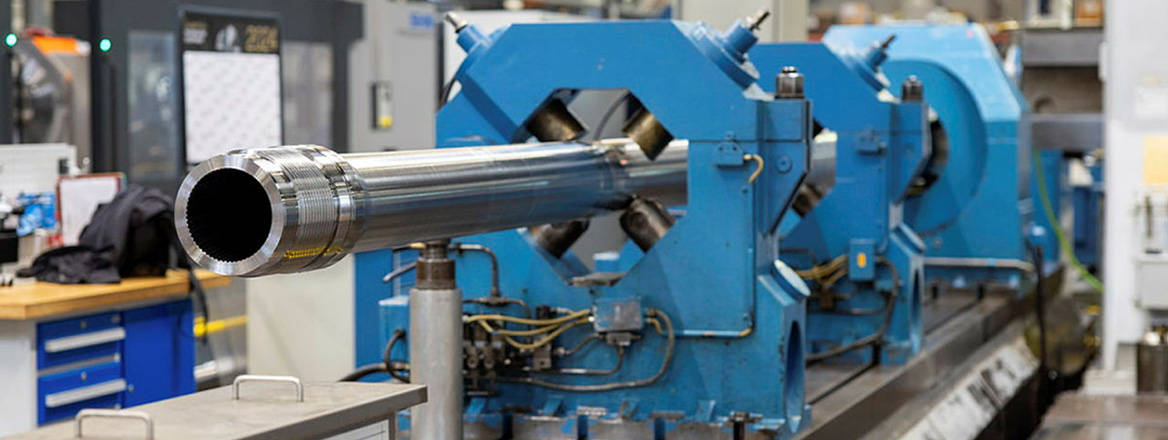How the UK Can Compete in a Consolidating European Defence Industry
As Western countries grow increasingly concerned about their national defence industrial bases, the international export market for defence goods is becoming more competitive. The new Labour government’s openness to cooperation with the EU presents opportunities to ensure that the UK defence industry can thrive in this environment.
When Russia began its full-scale invasion of Ukraine in 2022, it triggered an influx of material to Ukraine from Kyiv’s Western partners. This assistance enabled Ukraine to prevent Russia from toppling its government, but it also depleted Western stockpiles and pulled equipment out of service to be shipped to Ukraine. Replenishing these stockpiles with technologically updated material is not an easy task. Since the end of the Cold War, responding to governments’ demand levels, Western defence industries have shifted to just-in-time production models, reducing their output capacity. Meanwhile, many of the systems sent to Ukraine are legacy designs from the last century. Replacing them like-for-like would delay the necessary modernisation of Western forces and in many cases would not be feasible. As a result, industry and military planners face a dual challenge: they must decide how to meet immediate needs for restocking, while also enabling industry to develop new platforms that meet future battlefield requirements.
At the same time, the war in Ukraine also rekindled the value of defence industrial independence in defence procurement policy circles. For instance, Germany was unable to supply ammunition for the Gepard tank as Swiss neutrality laws prevented Rheinmetall’s factory in Switzerland from exporting arms to Ukraine. This situation drew further attention to the need for indigenous supplies of critical products that the Covid-19 pandemic had already emphasised. Geopolitical factors have also heightened this concern. Donald Trump made US support within NATO conditional on increased European defence spending. This made European leaders wary of relying on US supply chains and encouraged them to prioritise spending on their domestic defence industries.
UK Risks being the ‘Odd One Out’ in the Long Term
The EU has been pushing structured integration of its defence industrial base. The European Defence Fund (EDF) launched in 2021, and the European Defence Industrial Programme (EDIP) is under consultation in Brussels. The EDF endows research grants to consortiums of companies from at least three different EU member states, especially incentivising the inclusion of small- and medium-sized enterprises (SMEs). Non-EU-based companies are excluded from the funding. Meanwhile, the annual work programmes are agreed across member states, necessitating requirement harmonisation that could make national European programmes more accessible to cross-EU industry. The EDIP will enact the EU’s defence industrial strategy that seeks to pool defence procurement with the aim that, by 2030, 40% of national defence procurement budgets go towards pan-European programmes. It also envisages that EU members will spend 50% of national procurement budgets within the EU. Thus, the two programmes aim to future-proof European industry by investing billions in research and development. This enables them to satisfy their European market through indigenous development and creates a level playing field with less national favouritism.
The continental European market enjoys long-established links with UK industry and brings the benefit of working with the similar operational requirements of NATO’s eastern flank
This presents a strategic challenge to the UK defence industrial base, which is at risk of becoming the ‘odd one out’ between the biggest Western defence markets – Europe and the US. The EDF and EDIP and their likely successors will develop a more consolidated industrial base exclusive of UK industry and a more coherent domestic market landscape. Meanwhile, the UK defence industry is deeply intertwined with the continent. Airbus, Leonardo, Thales, MBDA and RBSL are examples. Sharing intellectual property from EDF initiatives will be complicated and so will the UK side’s access to European tendering. This presents a challenge for the highly integrated UK-European defence industrial landscape. Earlier negotiations on access to the EDF and PESCO led to no conclusions other than on PESCO’s Military Mobility project.
At the same time, the UK experience of cooperating with US programmes to keep and develop industry skills has been lukewarm. It managed to maintain key aerospace competence in the country through its cooperation with the US on the F35 striker as a junior partner, but it received less attractive workshares in the programme. Indeed, its relatively competitive effectors industry faces the challenge of being excluded from the programme, as the closed software architecture of the platform prevents effective integration.
Bi- and Minilateral Cooperation Should Complement Structured Cooperation
The UK government hopes to overcome this challenge through a series of ‘minilateral’ collaborations on major projects, such as the Global Combat Air Programme (GCAP) and the US-Australian cooperation on nuclear submarines. The GCAP programme with Japan and Italy retains competency in airframe design and production and includes a dual software architecture allowing effector integration. This makes it more attractive for export markets with an existing effectors industry while boosting the participants’ own effectors industries’ exports to markets without one. Yet, the question remains to what extent these programmes can provide the UK defence industrial base with the necessary resources to not only maintain its current competencies but also develop its competitiveness. As the F35 has shown, the established links with the US bear the danger of being overpowered by the significant advantages of extensive resources and market potential that US industry enjoys.
The continental European market enjoys long-established links with UK industry and brings the benefit of working with the similar operational requirements of NATO’s eastern flank. Yet, these links are at risk of being decoupled as the EU extensively funds research and, in the future, procurement from EU-based industry. Thus far, bilateral cooperation has been the UK’s preferred approach to remain connected with the continent. An example of this is the Lancaster House treaty with France, which served as a platform for deepening defence relations. The new Labour government seems eager to expand this approach, signing a joint declaration on ‘Enhanced Defence Cooperation’ with Germany and envisioning a revised relationship with the EU. So, what opportunities lie ahead for the UK defence industrial base in such an expansion of ties?
The ‘low-hanging fruits’ for UK-German cooperation are in the land domain sector. There is already an established legacy of successful cooperation with the M3 bridging capability, the modernisation of the Challenger 3 tanks as well as the UK’s embrace of Rheinmetall’s Boxer programme, encompassing various mechanised infantry variants and a 155mm howitzer on a Boxer basis. Thus, industry has already been intertwined in this sector, with the joint venture Rheinmetall BAE Systems Land (RBSL) being the most visible example of many.
Meanwhile, the Franco-German ambition of a joint future tracked main ground combat system (MGCS) has seemed beset by handwringing. Industry and politicians had been upset about the workshare on the combat air equivalent, FCAS. Yet, this spring, MGCS regained momentum as both countries agreed on an equal distribution of work across eight capability pillars and set up a joint venture to manage the project. The bad news is that the programme is currently closed for potential partners. However, this will likely be reconsidered at some point during the conceptual stage: Italy has expressed interest in the project, while pressing ahead with Leonardo and Rheinmetall’s strategic partnership to develop a main battle tank. To reduce European platform diversity, this project will eventually have to be merged with MGCS, and it could provide Italy with the necessary arguments to gain a satisfactory workshare for Leonardo. It also seems unlikely – especially in the crowded tracked armour market of the 2040s (when these concepts are planned to be introduced), with likely new competition from India and South Korea – that the Franco-German project can afford to ignore important Northeast European markets for much longer. Thus, the established UK-German cooperation in the land sector may provide a longer-term entry route into the MGCS and set the stage for a strategic partnership on land systems.
UK military capabilities will have to play a significant part in long-term planning for European defence, even with Brexit and EU ambitions in that area
In the aerospace sector, meanwhile, the fruits hang a little higher. Here, the continental FCAS and GCAP are fully established, and a reconsideration of the programmes’ compositions other than to include major exporting partners, such as Saudi Arabia, seems unlikely. This is because of the implied costs of including further requirements, language barriers and the diplomatic costs implied in any structural shake-up of either programme. Future related programmes concerning effectors and uncrewed wingmen concepts may be an area for cooperation, especially considering the high levels of cross-border industry integration in this field.
Yet, bi- and minilateral defence cooperation initiatives lack the strategic security that UK industry needs to maintain and develop its design and manufacturing capabilities. The uncertainty caused by the Strategic Defence Review over some key programmes underlines this point. Broader research and development investments ensure this competitiveness. National research programmes are fiscally limited and may struggle to access the continental expertise they have previously enjoyed. Labour’s more relaxed stance on the UK’s relationship with the EU might be an opportunity: over the next five years, the European Commission will be looking to reconsidering its current defence procurement policy instruments, as the EDF’s funding and the EDIP end in 2027. The UK government should re-explore the benefits of having a Norway-like role as a non-EU participant, not only to secure funding for innovation but also to enable industry to build on its extensive relationships with continental partners and, therefore, maintain access to that market.
The geopolitical arguments for such a setup are strong. The European component of NATO must become less dependent on US capabilities as the long-term US commitment to the continent seems destined to fade independent of the short-term political outlook. UK military capabilities will have to play a significant part in long-term planning for European defence, even with Brexit and EU ambitions in that area. A UK attempt at access to EU structures may find some supporters within the Union: research on the priorities in the European programmes has shown a split between member states that prioritise NATO capability planning and those that prioritise national industrial concerns. With its thorough commitment to NATO and highly capable and Europe-oriented industry, a UK attempt at accessing European programmes may find partners in those European states that seek to adapt and augment NATO capabilities, rather than replicating them.
The views expressed in this Commentary are the author’s, and do not represent those of RUSI or any other institution.
Have an idea for a Commentary you’d like to write for us? Send a short pitch to commentaries@rusi.org and we’ll get back to you if it fits into our research interests. Full guidelines for contributors can be found here.
WRITTEN BY
Dr Linus Terhorst
Research Analyst
Military Sciences
- Jim McLeanMedia Relations Manager+44 (0)7917 373 069JimMc@rusi.org



